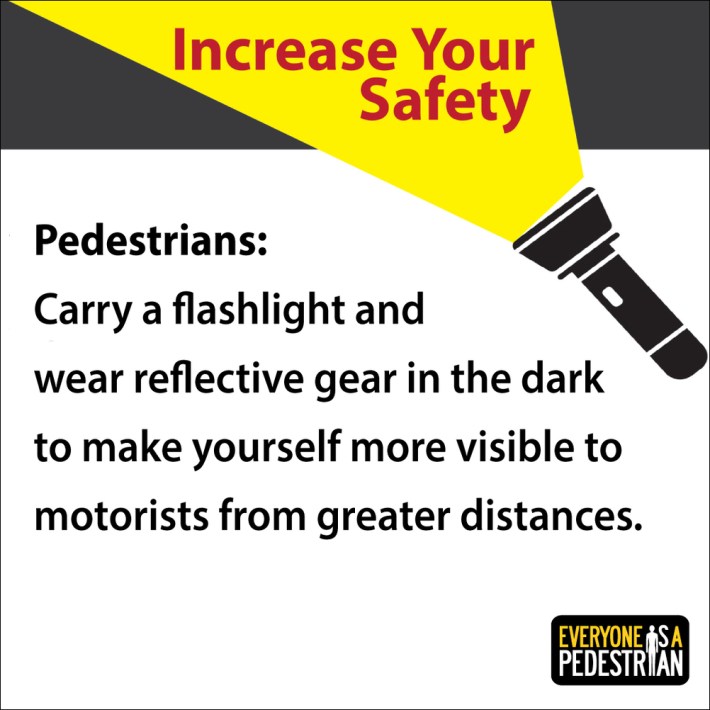America could slash its largest category of pedestrian deaths with just two simple pieces of lighting infrastructure, a new study finds — but first, cities need to stop blaming walkers for their own deaths and then invest in protecting them.
Drivers were more than 13 times more likely to yield to pedestrians after dark in crossings that were outfitted with both horizontal illuminators that shine a spotlight directly on the crosswalk and warning beacons that rapidly flash to let drivers know a walker is present, reported the Insurance Institute of Highway Safety. And even with horizontal illuminators only, drivers were still more than three times as likely to hit the brakes.
Those findings could be a powerful tool in the fight to curb the the national pedestrian death crisis, which claimed the lives of 7,522 people on U.S. roads in 2022 alone, with more than three-quarters killed after the sun went down. At least one-third of those deaths happened on roads with no street lighting, and nearly two-thirds happened in the mid-block locations which aren't always the focus of lighting design.

Of course, it's not terribly shocking that putting lights on dark roads makes it easier for drivers to see pedestrians in time to stop for them. But it should be shocking how slow America has been to implement even the most basic life-saving solutions, never mind top-shelf pedestrian lighting strategies like "rapid rectangular flashing beacons," which can cost an average of $22,250 a pop. That might sound like a lot, but it's nothing compared to the cost of even one human life lost — and even the most basic overhead streetlamp can save them.
“Solutions aren’t always complicated,” said David Harkey, president of the Institute. “We can stop pedestrians from being killed if we make sure drivers see them — but first city planners and road designers have to see the light.”
Enough. pic.twitter.com/dGZm5Nrr6G
— Tom Flood (@tomflood1) July 22, 2024
Unfortunately, many transportation leaders haven't gotten the message about the importance of pedestrian-specific lighting design — or at least, they haven't put their money where the danger is.
The road design sector "literally taught generations of engineers to design conditions for daylight and not to consider nighttime,” street safety researcher Rebecca Sanders memorably told the New York Times, citing designers' assumption that cars are equipped with working headlights. Cities like Detroit, meanwhile, have famously struggled to keep the lights on even when they do build them, reporting that about 40 percent of its streetlamps were non-functional when the Motor City filed for bankruptcy in 2013.

Instead of finding the money and political will to adequately light roads and find balance with light pollution concerns, some transportation leaders — including the federal Department of Transportation itself — have called on walkers to light their own way, mounting pedestrian-shaming PSA campaigns that urge people on foot to carry flashlights and wear reflective clothing.
Rearchers at the IIHS argue that it's past time for those attitudes and procedures to change — because if they don't, the carnage won't stop.
“These results show that simple changes can have a dramatic impact on pedestrian safety,” IIHS President David Harkey said. “When drivers are yielding, pedestrians aren’t dying.”






